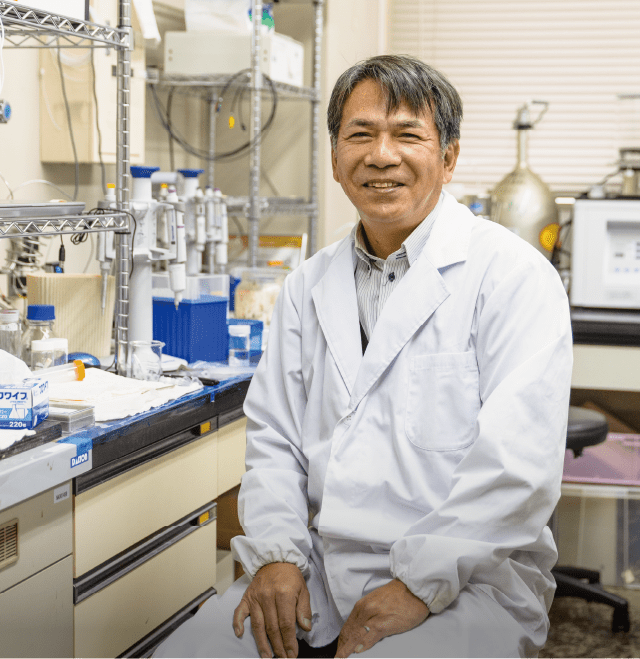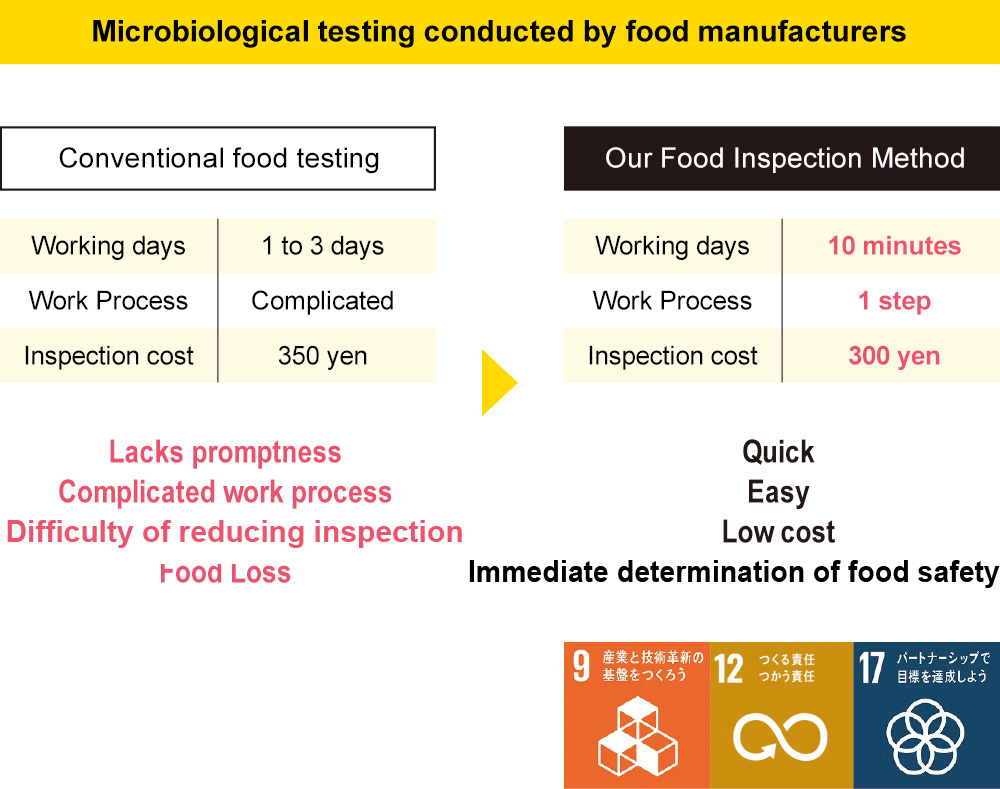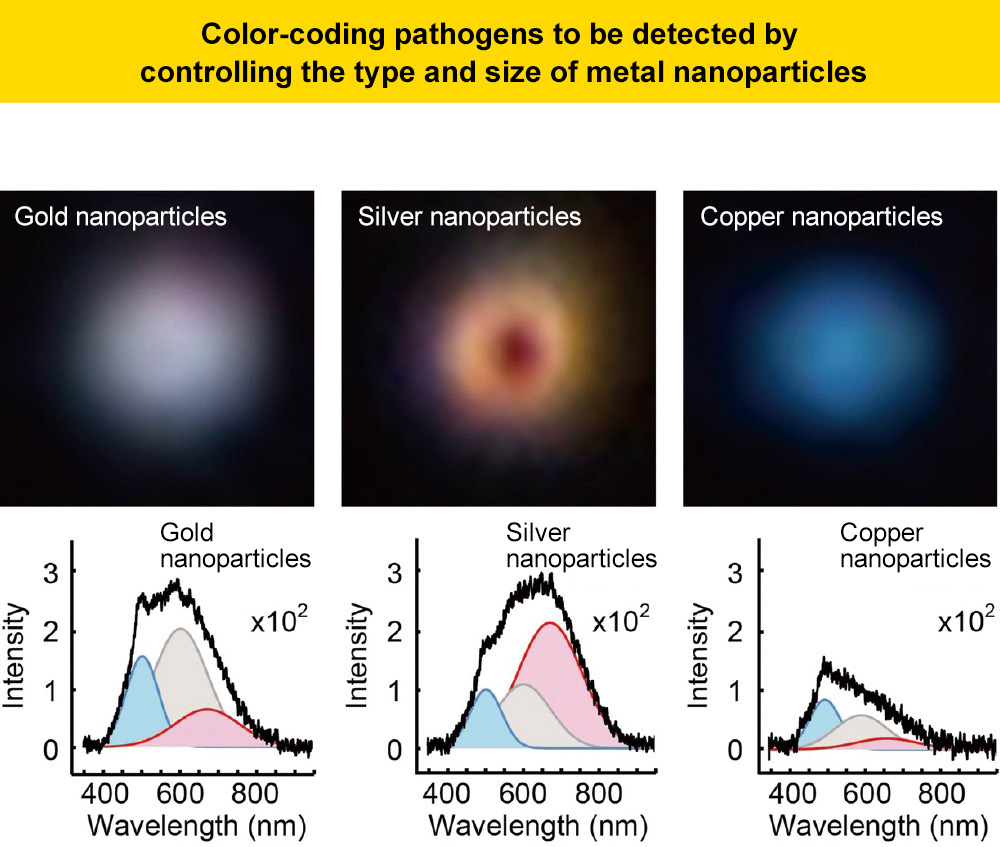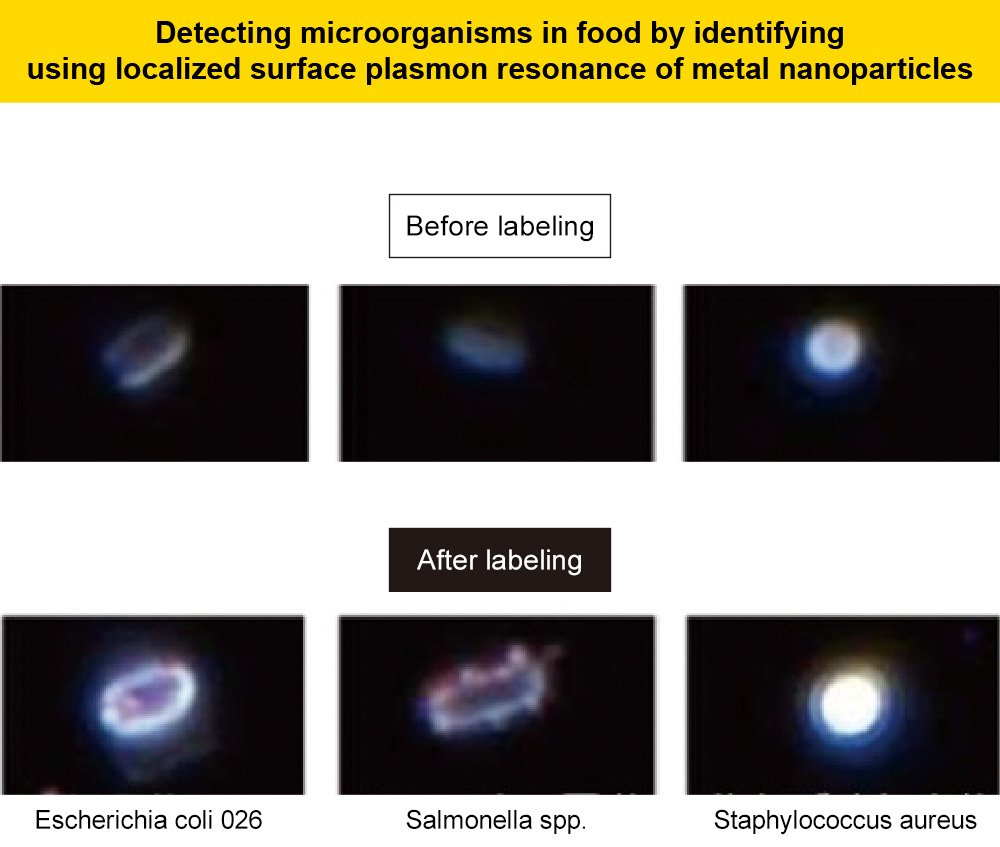Rapid Microbiological Detection Using Metallic
Nanohybrids Antenna
Rapid Microbiological Detection Using Metallic
Nanohybrids Antenna
Detect microorganisms in samples using localized surface plasmon resonance of metallic nanoparticles to identify. The system reduces the time required for microorganisms testing from two or more days to 10 minutes, and at the same time, enables simultaneous detection of several types of pathogens by color-coding. We provide a rapid, simple, and inexpensive microbiological testing product.
- Affiliation:
- Osaka Metropolitan University
Graduate School of Engineering
- Representative:
- Shigeki Nishii

Visiting Researcher,
Osaka Metropolitan University
Graduate School of Engineering
Shigeki Nishii PhD
Microbiological testing has required a complex, expensive, and slow culture process. We will bring innovation to microbiological testing with a simple, rapid, and inexpensive method by utilizing localized surface plasmon resonance of metallic nanoparticles.
SOLUTIONMethods for solving social issues
We ensure food safety and protect society from the threat of infectious diseases
Microbiological testing requires one to two days to obtain results due to the culture process, and is difficult to automate, resulting in high testing costs and differences in results depending on the skill level of the person performing the test. We will develop a simple, rapid, and inexpensive Microbiological testing method to ensure food safety and protect our social life from the threat of infectious diseases.
ORIGINALITYUniqueness, Passion for Development
Revolutionizing in microbiological testing by identifying with metallic nanoparticles
Identifying with original metal nanoparticles eliminates the problem of signal degradation and the need for expensive devices such as fluorescence detectors. By visualizing pathogens, we can understand the actual situation in a sample. We will revolutionize bacterial testing by developing applications that match the purpose, such as food hygiene and infectious disease diagnosis.
VISIONDream, Outlook, Business Image
Building a next-generation screening system for infectious diseases
Initially, the target market is the food industry, and we will develop a compact detector that can be used for on-site measurement. Later, we will enable virus detection and aim to construct an infectious disease screening system that will be effective in the event of a pandemic.




